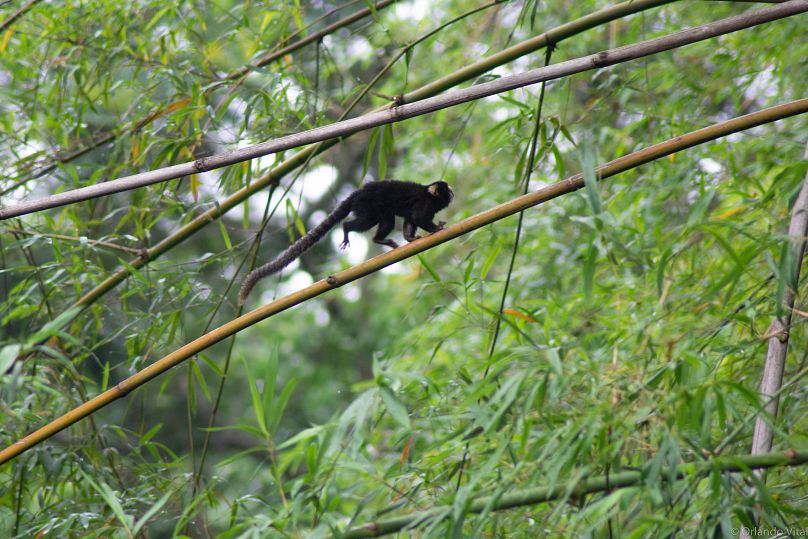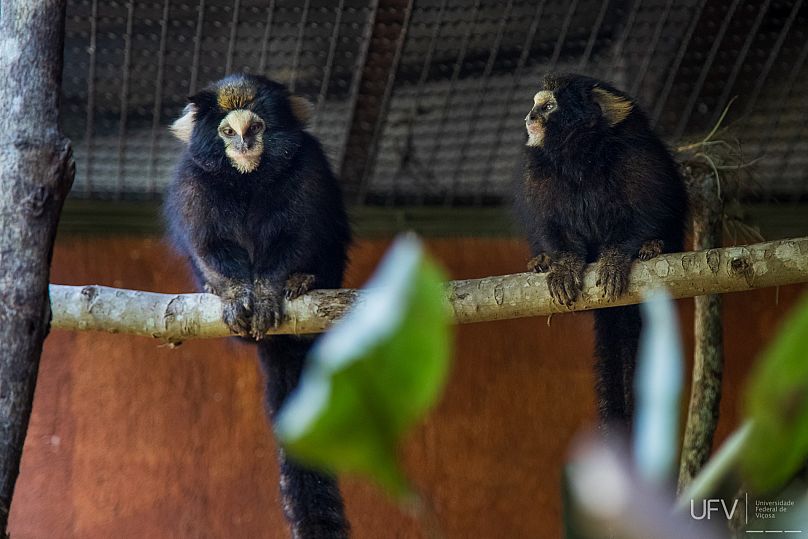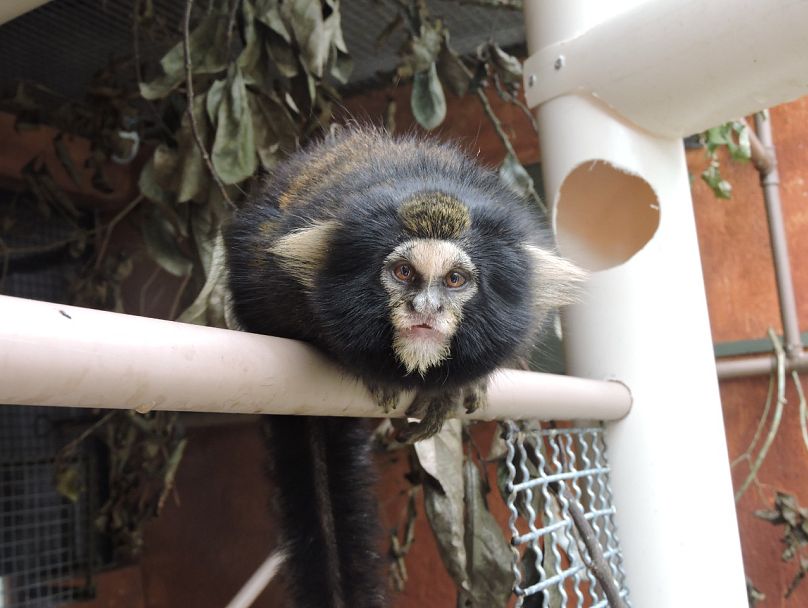In Brazil, invasive species compete with native marmosets for food, habitat and even reproductive partners, jeopardising their survival in the future.
In the southeast of Brazil, in cities like São Paulo and Rio de Janeiro, marmosets are a common sight. They can be found hanging out on rooftops, dangling from electricity cables and stealing food.
These common marmosets are so widespread that many people assume the invaders are the native species. They aren't. The rare animals endemic to the region can instead be found in pockets of forest, 700 metres above sea level on the mountain slopes.
These mainly arboreal mountain marmosets spend most of their lives in the treetops and this habitat is rapidly disappearing.
“We have a historic problem in the Atlantic Forest because since Brazil was discovered more than 500 years ago, it has been cut and gutted,” Fabiano de Melo, coordinator of the Mountain Marmoset Conservation Centre tells Euronews Green.
Of the 1 million square kilometres of Atlantic Forest that once wrapped around the coast of the country, around 7 per cent now remains. It is a problem that impacts all of the region's primates and with no connection between these islands of trees, it is hard for populations to survive.
On top of the dangers of the ever-decreasing forest, these animals face another threat to their survival: the non-native monkeys trafficked into the region over the last 30 to 40 years.
Two species are now heading towards extinction: the Buffy headed marmoset (Callithrix flaviceps) and the Buffy tufted-ear marmoset (Callithrix aurita).
How are invasive species threatening the mountain marmosets?
Founder of the Mountain Marmoset Conservation Programme (MMCP), Rodrigo Salles de Carvalho, first noticed the problem while carrying out fieldwork for his PhD in the region.
“I got a real certain perspective of the problem, that Callithrix aurita was suffering and I saw how fast the invasive species were growing and taking over. I got really, really scared about that.”
There was no one dealing with the full magnitude of the problem and Rodrigo knew something needed to be done. He spoke to conservation experts across Brazil and the rest of the world, attended workshops on how to care for these creatures, and eventually, the MMCP was created.
So how exactly are these animals from other parts of Brazil putting pressure on the native species?
Friendlier and ‘cuter’ than the mountain marmosets, they were brought as pets from the north of the country. They were released by owners who grew tired of their pets and even by the environmental police, who didn’t realise the problems they would cause.
Rodrigo recounts stories he has been told about misguided officials trying to do what was best for trucks full of animals that had been taken from their owners.
“They didn't know what to do and then they just opened everything and released all the animals into the closest forest fragments they could find.
Not knowing any better at the time, officers thought this was the best course of action, says Rodrigo. “They were very far away from understanding all the ecological issues and they were freeing animals in nature.”
But the non-native marmosets adapted very well to the environment in southeast Brazil - especially to the now gutted Atlantic Forest. The marmosets in their mountain hubs were being invaded from “the bottom to the top,” Rodrigo explains.
They reproduce quickly, compete for habitat, and even reproductive partners. It is this last point that is perhaps most worrying - with hybrids between the species driving an uncertain future.
There isn’t much research at the moment but what has been seen by scientists in the field suggests hybridisation could mean that the mountain marmoset will be genetically lost.
The first generation of mixing created strong individuals that can often be seen on the streets of Rio de Janeiro. But future generations then seem to disappear. Rodrigo suspects reproductive problems are to blame with more and more hybridised groups popping up then disappearing over the last few years.
“The process of hybridisation is very quick, it is very fast,” Fabiano adds.
“We are now just finding hybrids, because they breed with each other and we lose the genetics from the original species. That's a huge problem.”
How will a captive breeding programme save the mountain marmosets?
Fabiano is in charge of a new captive breeding programme hoping to secure the future of these threatened animals. Not all endangered primates have a captive breeding programme, but the speed at which Callithrix aurita and the Callithrix flaviceps are being lost makes this one essential.
“The importance of this conservation breeding programme is both to protect them and their genetics and to try to have many animals to reintroduce in the near future,” Fabiano explains.
Mountain marmosets are very small animals, often weighing under half a kilogram. They can have up to two babies, with each mother producing around four infants every year. Conservationists believe this means they can quickly build a captive “safety population” if they ever need to be reintroduced to the wild.
“I have hope, a good hope in relation to the future because we can reproduce these animals very well,” Fabiano says.
“We actually have good conditions in which to do that now. We just have to get more animals into our captive programme.”
At the moment, this is a challenge but Fabiano says that when they have the animals to breed, they will be able to create a lot of families to send to other centres, “and after that hundreds of mountain marmosets to put in nature.”
At the centre, these rare and elusive animals can also be better studied to discover more effective ways to save them from extinction. The team will also be the first to try and keep Callithrix flaviceps in captivity, providing a wealth of opportunities to learn.
Isabella Normando is the head animal keeper at the centre. When she first started, most of the knowledge she had about keeping these creatures in captivity was very theoretical.
“When we decided to establish this captive colony over here in Brazil, we had a workshop with specialists from Brazil and from Europe.”
Much of what they learned came from experts at European centres including Appenheul Zoo in the Netherlands and Durrell Wildlife Conservation Trust in Jersey. “It's a bit crazy because they are a Brazilian species,” Isabella laughs.
Building on the help from these institutes, she wants the centre to become an authority on caring for these animals and reintroducing them to the wild.
“We are inside a university,” Isabella explains, “so we aim also to be an institution that favours the graduation of new primatologists and experts in monkeys.”














